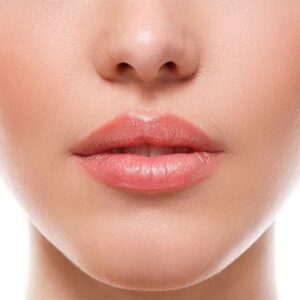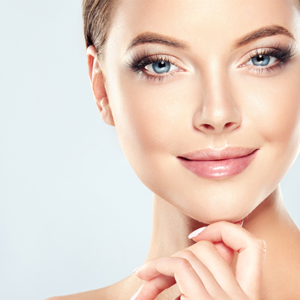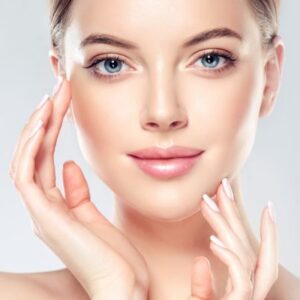
What is Chemical Peel?
Chemical Peeling is an application in which one or more chemical agents are applied to the skin to revitalize the skin, restore its naturalness, rejuvenate it and make the skin look good, leaving the skin damaged at different depths and resulting in a healthy skin.
The purpose of Chemical Peeling is to reveal a healthy skin by leaving damage in different parts of the skin base of the skin. The skin is suitable for showing fine lines, wrinkles, spots, freckles, dark and crusty spots with cancer potential, and a pregnancy mask called melasma due to reasons such as sun damage, aging, and burns. These complaints can be corrected with Chemical Peeling and even improved on the skin as if it had never happened.
Chemical Peel is also very effective in acne and acne scars. It provides oiliness on the skin and reduces the pores. Chemical Peel targets a younger, brighter, smoother, healthier and spotless skin. Chemical Peeling is an application that has proven its safety by the FDA.
How is Chemical Peeling done?
Chemical Peeling is applied to the face, neck, hands, chest and arms by a specialist doctor in a hospital environment, under sterile conditions, by choosing the acid solution in accordance with the doctor’s choice and the patient’s skin. Since there is no pain and pain in the application, there is no need to apply anesthesia before the application.
After the patient’s skin is cleaned with a cleaning solution suitable for the skin, the area around the eyes is covered with gauze and glasses. Afterwards, the Chemical Peeling solution is applied to the forehead, sides of the face, cheeks, nose, upper lip and chin from top to bottom. Chemical Peeling is applied in three different ways as superficial, medium and deep according to the depth parameter.
Superficial Chemical Peeling: In the application of Superficial Chemical Peeling, the process is applied to the upper layer of the skin, namely the epidermis layer. It is normal to experience burning, stinging and redness during the application, and these symptoms will pass by themselves in a short time. Fine wrinkles, acne and pimples, uneven skin tone, dryness are successfully treated with superficial Chemical Peeling. This type of Chemical Peel usually lasts 4-8 sessions at intervals of one to four weeks.
Medium Depth Chemical Peel: In the medium depth Chemical Peel application, the epidermis layer, which is the uppermost part of the skin, and the upper dermis, which is the middle layer, are targeted. In the application of medium depth Chemical Peeling, which has a deeper peeling effect than the superficial Chemical Peeling application, crusting and peeling are seen on the reddened skin first. After peeling, a healthier skin appearance is achieved. This type of Chemical Peel continues for 2-4 sessions at intervals of two to four months.
Deep Chemical Peeling: In the Deep Chemical Peeling application, the epidermis, dermis and middle skin cells of the skin are affected. Healing time is longer than other types of Chemical Peeling applications because this type of Chemical Peeling application affects the deeper layer of the skin. Deep Chemical Peel is done once and not repeated.
If redness or whitening is observed on the skin during the Chemical Peeling application, the process is terminated. In some cases, the skin is neutralized with a neutralizing solution. Topical moisturizers with protective and soothing properties are applied to the skin and the application is completed.
How does a Chemical Peel work?
The mechanism of action of Chemical Peeling is based on the damage and regeneration of the defective areas on the skin. This happens by triggering the production of collagen and elastin during the wound healing of the damage in the skin layers.
In the chemical peeling application, an acid is applied to the skin that can cause the separation and peeling of the superficial layers. As these acids are numerous, the main ones are alpha hydroxy acid (AHA), glycolic acid, fruit acid, lactic acid, salicylic acid, beta hydroxy acid (BHA), trichloroacetic acid (TCA), Jessner solution and their combinations.
Who is a suitable candidate for Chemical Peeling?
Chemical Peeling is applied in the treatment of conditions such as acne and acne scars, acne treatment, enlarged pores, damaged skin, skin spots, light lines and wrinkles, sun spots, dull and pale skin, which should be applied under expert control.
Who can not do Chemical Peeling?
Those who have active herpes infection or active inflammation in the chemical peel application area, pregnant, suspected pregnancy and breastfeeding women, those who have taken isotretinoin treatment in the last 6-12 months, those who use birth control pills, skin cancers, those who use drugs that may cause photosensitivity, those who are allergic to aspirin, those who take blood thinners. It can not be applied to those who use aspirin-derived drugs, those with dark skin color, those who have been exposed to intense sunlight and those who have a history of keloid.
When does one return to social life after Chemical Peeling ?
The process of returning to social life after Chemical Peeling may vary depending on the type of Chemical Peeling application.
Some people should take a break from their social life at this point, since in all Chemical Peeling applications one should not go out to the sun a few days after the application, some people should take a break from their social life at this point, as brown spots, deep redness and slight peeling may occur in the application of deep Chemical Peeling or medium-depth Chemical Peeling. .
On average, the person can continue his social life at the end of the fifth day.
What should be considered after Chemical Peeling?
- It is normal to experience redness, stinging and tenderness after a Chemical Peel. These complaints go away on their own after a few days.
- If crusting occurs after Chemical Peeling, these crusts should not be itchy and should not be plucked.
- High-protection sunscreen and moisturizer recommended by the doctor should be used. If there is no special recommendation, products that do not contain heavy chemicals and parabens should be used.
- Care should be taken to protect from the sun and not to go out in the sun until a few days after the application.
- Make-up should not be applied after the application, and no product other than moisturizer and sunscreen should be used for a few days.
Frequently asked questions about Chemical Peeling
Will there be an undesirable appearance on the skin after Chemical Peeling ?
What is important in Chemical Peeling application is the type of Chemical Peeling. There may be appearances such as redness or sunburn. Apart from this, redness, slight peeling, which will last for one to five days in the superficial Chemical Peel application, redness, edema and tension, and brown layers may be seen in the medium depth Chemical Peeling application. Brown layers spontaneously disappear in 7-10 days.
If Chemical Peeling is not done under the right conditions and by experts, prolonged redness, permanent white and brown spots, skin infections, acne and acne aggravation, herpes formations, allergic reactions and permanent scars can be seen.
How should skin care be after Chemical Peeling ?
There are some substances that should be considered in skin care after Chemical Peeling. After chemical peeling, it is necessary to moisturize the skin with moisturizers that do not contain heavy chemical products for 1-2 weeks. It is necessary to clean the skin with sensitive and skin-friendly cleansers and add these products to routine skin care.
High-protection sunscreen during the day and moisturizers with no concealer feature should be used at night. For reactions experienced after the application, cortisone creams can be used under the control of a doctor. There is no harm in applying make-up 24 hours after the application. Exposure to direct sunlight and solarium should be avoided for at least two weeks.
Is Chemical Peeling a painful application?
Pain is not expected during superficial and medium depth Chemical Peels. During Deep Chemical Peeling, it is applied after local anesthesia as pain is expected.

























